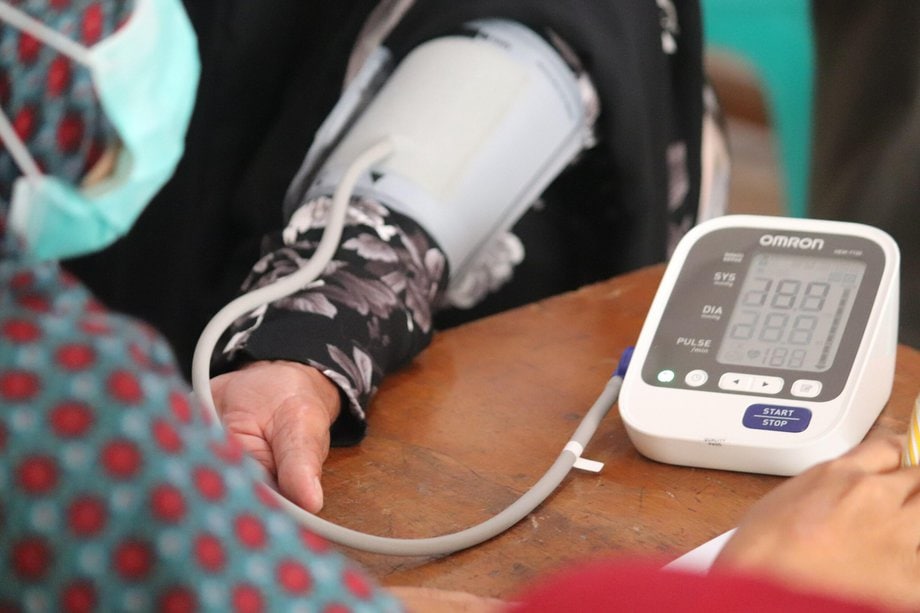What Are The Different Stages Of Hypertension?

Hypertension, commonly referred to as high blood pressure, is a prevalent health condition worldwide. It is associated with various cardiovascular complications and contributes significantly to the global burden of disease. Understanding the different stages of hypertension is crucial for its management and prevention of related complications.
This article aims to provide an objective and impersonal overview of the different stages of hypertension. Prehypertension, stage 1 hypertension, stage 2 hypertension, and hypertensive crisis are the four distinct stages of hypertension, each defined by specific blood pressure ranges.
Additionally, monitoring and diagnosis, lifestyle modifications, medication options, and follow-up and management strategies will be discussed. By addressing these stages comprehensively, individuals at risk or already diagnosed with hypertension, as well as healthcare professionals, can gain a better understanding of the condition and implement appropriate interventions to mitigate its impact on health.
Key Takeaways
- There are different stages of hypertension that exist.
- Excessive alcohol consumption and dietary factors can contribute to hypertension.
- Regular exercise and weight management are important for controlling blood pressure.
- Medications, such as diuretics and ACE inhibitors, can help manage hypertension, but need to be closely monitored and adjusted as necessary.
Prehypertension
Prehypertension is characterized by blood pressure levels that are higher than normal but not yet classified as hypertension, serving as a warning sign for individuals to adopt lifestyle modifications and preventive measures to avoid progressing to more severe stages of the condition.
Prehypertension management plays a crucial role in preventing the onset of hypertension. Lifestyle modifications, such as regular physical activity, weight management, and a healthy diet with reduced sodium intake, are recommended. Additionally, identifying and addressing risk factors for prehypertension, such as smoking, excessive alcohol consumption, and stress, is essential.
Regular monitoring of blood pressure levels and routine health check-ups are also important for early detection and intervention. By implementing these measures, individuals with prehypertension can significantly reduce their risk of developing hypertension and its associated complications.
Stage 1 Hypertension
Stage 1 hypertension is characterized by elevated blood pressure levels that surpass the normal range, leading to increased strain on the cardiovascular system and potential damage to vital organs. It is important to identify and treat stage 1 hypertension to prevent further complications. Treatment options for stage 1 hypertension typically involve lifestyle modifications and medication. Lifestyle modifications may include adopting a healthy diet, reducing sodium intake, engaging in regular physical activity, maintaining a healthy weight, and limiting alcohol consumption. Medications, such as diuretics, beta blockers, calcium channel blockers, and angiotensin-converting enzyme (ACE) inhibitors, may also be prescribed to lower blood pressure. It is important for individuals with stage 1 hypertension to work closely with their healthcare provider to determine the most appropriate treatment plan based on their individual needs and medical history.
| Treatment Options for Stage 1 Hypertension | |
|---|---|
| Lifestyle modifications | Medications |
| Healthy diet | Diuretics |
| Reduced sodium intake | Beta blockers |
| Regular physical activity | Calcium channel blockers |
| Maintaining a healthy weight | ACE inhibitors |
Stage 2 Hypertension
Elevated blood pressure levels exceeding the normal range in stage 2 hypertension significantly increase the risk of cardiovascular complications and potential harm to vital organs. The causes of stage 2 hypertension are similar to those of stage 1, including lifestyle factors such as inadequate physical activity, unhealthy diet, and excessive alcohol consumption.
Additionally, genetic factors, age, and certain medical conditions like kidney disease and hormonal disorders can contribute to its development. Symptoms of stage 2 hypertension may include severe headaches, shortness of breath, chest pain, dizziness, and blurred vision.
Treatment options for stage 2 hypertension typically involve a combination of lifestyle changes and medication. Lifestyle modifications include regular exercise, a healthy diet rich in fruits and vegetables, limited alcohol intake, and stress management. Medications such as diuretics, beta-blockers, ACE inhibitors, and calcium channel blockers may be prescribed to lower blood pressure and reduce the risk of complications.
Hypertensive Crisis
Hypertensive crisis, a medical emergency characterized by a sudden and severe increase in blood pressure, poses a significant risk to cardiovascular health and can lead to life-threatening complications. It is classified into two categories: hypertensive emergency and hypertensive urgency.
Hypertensive emergency refers to a situation where there is evidence of acute end-organ damage, such as acute myocardial infarction, pulmonary edema, or stroke. Immediate blood pressure reduction is necessary to prevent further damage and stabilize the patient. This is typically achieved through intravenous medications in a hospital setting.
On the other hand, hypertensive urgency involves a severe increase in blood pressure without evidence of acute end-organ damage. Although urgent blood pressure reduction is still required, it can be achieved through oral medications in an outpatient setting.
The following table provides a visual representation of the differences between hypertensive emergency and hypertensive urgency:
| Hypertensive Emergency | Hypertensive Urgency | |
|---|---|---|
| Acute end-organ damage | Present | Absent |
| Blood pressure control | Immediate | Urgent |
| Medication route | Intravenous | Oral |
| Treatment setting | Hospital | Outpatient |
In summary, hypertensive crisis demands prompt medical attention to prevent potentially fatal complications. Differentiating between hypertensive emergency and hypertensive urgency is crucial in determining the appropriate management approach.
Monitoring and Diagnosis
Monitoring and diagnosis of high blood pressure involves the systematic measurement and evaluation of blood pressure levels to assess the severity of the condition and determine the appropriate course of treatment. This process is crucial in identifying individuals at risk of developing complications associated with hypertension.
The following are key aspects of monitoring and diagnosis:
- Blood pressure monitoring: Regular blood pressure measurements are necessary to determine if an individual has consistently elevated blood pressure. This can be done using a blood pressure cuff, which is commonly available in healthcare settings or through home blood pressure monitoring devices.
- Diagnostic tests: Additional tests may be conducted to evaluate organ damage caused by hypertension, such as blood tests to assess kidney function, electrocardiograms to evaluate heart health, and imaging studies to examine blood vessels.
By utilizing blood pressure monitoring and diagnostic tests, healthcare professionals can accurately diagnose hypertension and provide appropriate treatment strategies.
Lifestyle Modifications
This discussion will focus on lifestyle modifications that can help lower blood pressure.
One important aspect is dietary changes, which can include reducing sodium intake, increasing potassium-rich foods, and following a heart-healthy eating plan such as the DASH (Dietary Approaches to Stop Hypertension) diet.
Regular exercise is also crucial in managing hypertension, as it helps improve cardiovascular health and can lower blood pressure.
Additionally, maintaining a healthy weight is important, as excess weight can contribute to high blood pressure.
Dietary changes to lower blood pressure
To effectively manage hypertension, implementing dietary modifications has been shown to be an impactful strategy in reducing high blood pressure. Making dietary changes such as lowering sodium intake and following the DASH (Dietary Approaches to Stop Hypertension) diet can significantly contribute to lowering blood pressure levels.
Some key dietary recommendations for individuals with hypertension include:
- Decreasing sodium consumption: Reducing the amount of sodium in the diet can help lower blood pressure. This can be achieved by limiting the intake of processed foods, canned foods, and adding less salt while cooking or at the table.
- Following the DASH diet: The DASH diet emphasizes consuming fruits, vegetables, whole grains, lean proteins, and low-fat dairy products. This dietary pattern is rich in nutrients such as potassium, calcium, and magnesium, which have been shown to lower blood pressure.
- Increasing potassium intake: Potassium-rich foods such as bananas, oranges, spinach, and potatoes can help counterbalance the effects of sodium and lower blood pressure.
- Limiting alcohol consumption: Excessive alcohol consumption can raise blood pressure levels. It is recommended to limit alcohol intake to moderate levels or avoid it altogether.
Implementing these dietary changes can have a positive impact on blood pressure control and overall cardiovascular health.
Importance of regular exercise and weight management
Regular exercise and maintaining a healthy weight are crucial elements in the management of hypertension, as they have been shown to have significant positive effects on blood pressure control and overall cardiovascular health.
Regular physical activity helps to lower blood pressure by strengthening the heart, improving blood flow, and reducing the stiffness of blood vessels. It also aids in weight management by burning calories and increasing metabolism. Engaging in activities such as brisk walking, swimming, cycling, or aerobics for at least 150 minutes per week is recommended to achieve cardiovascular benefits.
Additionally, incorporating resistance training exercises twice a week helps to build lean muscle mass and further improve blood pressure control.
Weight management is equally important, as excess weight puts additional strain on the heart and blood vessels. Achieving and maintaining a healthy weight through a balanced diet and regular exercise can significantly reduce the risk of developing hypertension and its associated complications.
Medication Options
One effective approach to managing hypertension is through the use of various medications. These medications are designed to lower blood pressure and reduce the risk of complications associated with hypertension.
Medications can be highly effective in controlling blood pressure and preventing further damage to the heart and blood vessels. However, it is important to note that each medication may have different levels of effectiveness and potential side effects.
Here are five commonly prescribed medications for hypertension:
- Diuretics: These medications help the body get rid of excess salt and water, reducing the volume of blood and lowering blood pressure.
- ACE inhibitors: These drugs block the production of a hormone that narrows blood vessels, helping them relax and lowering blood pressure.
- Beta blockers: These medications reduce the heart’s workload by blocking the effects of adrenaline, resulting in lower blood pressure and heart rate.
- Calcium channel blockers: These drugs relax and widen blood vessels by preventing calcium from entering the muscle cells of the heart and blood vessels.
- Angiotensin II receptor blockers: These medications block the effects of a hormone that narrows blood vessels, resulting in lower blood pressure.
It is important to work closely with a healthcare provider to find the most effective medication with the fewest side effects for individual needs.
Follow-up and Management
Follow-up and management of hypertension involves monitoring blood pressure levels regularly and adjusting medication dosages as needed to ensure optimal control and minimize the risk of complications.
Patients with hypertension typically have follow-up appointments scheduled at regular intervals, allowing healthcare providers to monitor their blood pressure and assess the effectiveness of the prescribed medications.
During these appointments, patients may also be educated about self-care techniques that can help manage hypertension. These techniques may include lifestyle modifications such as adopting a healthy diet, engaging in regular physical activity, limiting alcohol intake, and quitting smoking.
Additionally, patients may be advised to regularly check their blood pressure at home using a home blood pressure monitor.
By actively participating in follow-up appointments and implementing self-care techniques, individuals with hypertension can better manage their condition and reduce the risk of adverse outcomes.
Frequently Asked Questions
How can I prevent prehypertension from progressing to stage 1 hypertension?
Preventing prehypertension from progressing to stage 1 hypertension can be achieved through lifestyle modifications. These may include maintaining a healthy weight, following a balanced diet, engaging in regular physical activity, limiting alcohol consumption, and managing stress levels.
What are the symptoms of stage 2 hypertension?
Managing stage 2 hypertension involves lifestyle changes such as regular exercise, maintaining a healthy weight, reducing sodium intake, and following a balanced diet. Symptoms of stage 2 hypertension may include severe headaches, dizziness, chest pain, shortness of breath, and vision problems.
How is hypertensive crisis different from stage 2 hypertension?
Hypertensive crisis is a severe condition characterized by extremely high blood pressure that requires immediate medical attention. It is different from stage 2 hypertension in terms of its urgency and potential for organ damage. Treatment options for stage 2 hypertension include lifestyle modifications and medications.
What are the potential complications of hypertension if left untreated?
Left untreated, hypertension can lead to potential complications and long-term effects. These may include heart disease, stroke, kidney damage, vision loss, and cognitive decline. Early detection and management are crucial in preventing these adverse outcomes.
How often should blood pressure be monitored after starting medication for hypertension?
Blood pressure should be monitored regularly after starting medication for hypertension to ensure effective blood pressure management. Regular monitoring helps assess the effectiveness of the medication and allows for necessary adjustments to achieve optimal control.









